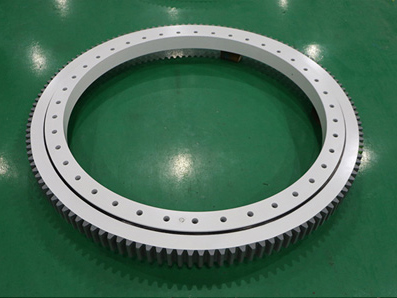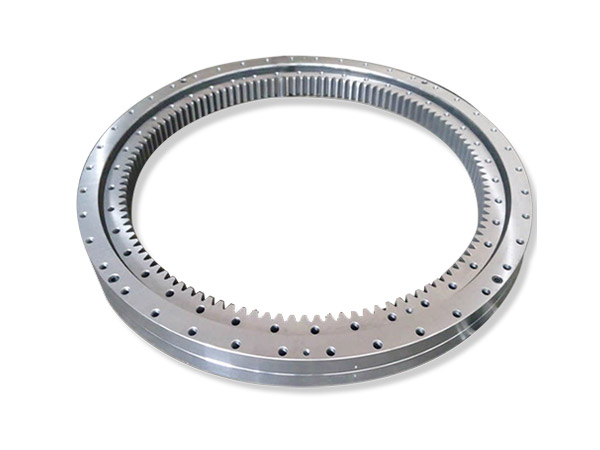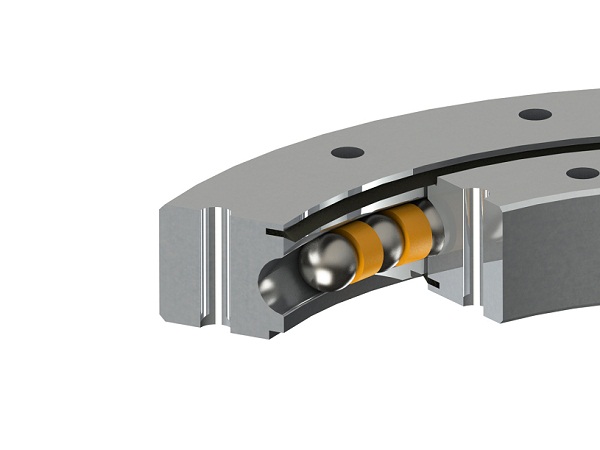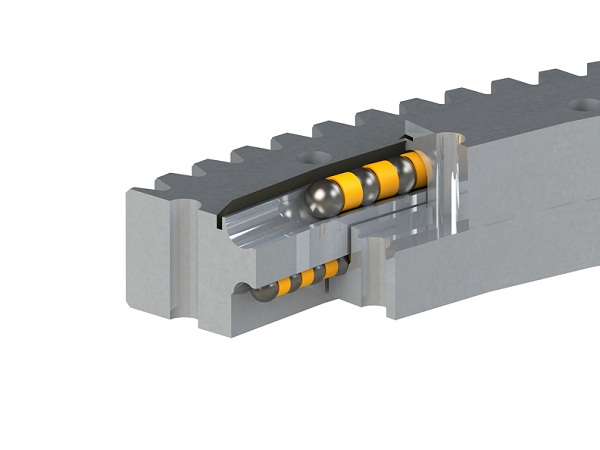¿Cuáles son los métodos de sellado del cojinete de giro? Función y método de sellado.
Sabemos que el cojinete de giro tiene un papel muy importante en alguna producción, y para garantizar estas funciones, necesitamos realizar muchas operaciones en el cojinete de giro durante el uso del cojinete de giro. El sellado de los rodamientos más comunes, entonces ¿por qué se debe usar el rodamiento giratorio? ¿para sellar? ¿Cuáles son los métodos comunes de sellado de los cojinetes de orientación?
El papel del cojinete de giro sellado

1. Aísle los objetos extraños del exterior
Proteja el cojinete para evitar que el polvo externo, la suciedad, las partículas de metal, la humedad, el gas ácido y otros desechos invadan el interior del cojinete. Si el rodamiento está mal sellado y lo invaden desechos externos, la condición de trabajo del rodamiento se deteriorará significativamente y la vida útil del rodamiento se reducirá significativamente.
2. Evitar fugas de grasa
Si hay fugas de aceite, destruirá rápidamente la lubricación normal del cojinete, lo que provocará que el cojinete se queme debido al calor. Además, el dispositivo de sellado deficiente no solo provoca el desperdicio de fugas de aceite, sino que también contamina el equipo mecánico y los productos procesados. Por lo tanto, para que la máquina funcione correctamente, el rodamiento debe tener un buen dispositivo de sellado.
La forma de sellar el cojinete de giro.

En general, los métodos de sellado de los rodamientos incluyen sellado por contacto y sellado sin contacto, pero estos dos métodos de sellado son adecuados para diferentes situaciones. El sellado por contacto es adecuado para rodamientos que funcionan en entornos de trabajo de media y baja velocidad, mientras que los rodamientos de sellado sin contacto que son adecuados para entornos de trabajo de alta velocidad y alta temperatura, como los rodamientos giratorios, generalmente funcionan a bajas velocidades, pero también hay operaciones de alta temperatura. El análisis muestra que los métodos para sellar los cojinetes de orientación son los siguientes:
1. Sello de anillo de fieltro
Se abre una ranura trapezoidal en la tapa del cojinete y el fieltro fino de la superficie rectangular se coloca en la ranura trapezoidal para hacer contacto con el eje, o se presiona axialmente el casquillo, de modo que el anillo de fieltro se comprima para generar presión radial y abrazar el eje. eje, logrando así el propósito de sellar. La estructura de sellado es simple y el costo es bajo, pero el efecto de sellado es deficiente, no se puede ajustar y el desgaste es grave.
2. El cuenco de cuero está sellado.
Coloque una copa de sellado en la tapa del cojinete (la copa está hecha de caucho y otros materiales) y presiónela directamente sobre el eje. Para mejorar el efecto de sellado, se usa un resorte helicoidal en forma de anillo para presionar el anillo interior de la copa de cuero, de modo que el anillo interior de la copa de cuero y el eje tengan un ajuste más apretado, y el efecto de sellado es mejor que la del anillo de fieltro. /s de lubricación con grasa o lubricación con aceite lubricante.
3. Sello del anillo de sellado
El anillo de sellado generalmente está hecho de cuero, plástico o caucho resistente al aceite, y se puede fabricar en diferentes formas de sección transversal según sea necesario. El anillo obturador en forma de O tiene una sección circular y se presiona sobre el eje por su propia fuerza elástica. Tiene una estructura simple y es fácil de montar y desmontar. También se usan comúnmente los sellos de perfil en forma de J y en forma de U, que tienen una estructura en forma de labio. La dirección del labio de sellado es hacia la parte de sellado, que es similar a la dirección de la pestaña en el sello de copa. Cuando la temperatura es alta y la velocidad de rotación es alta, se recomienda que el labio de sellado también se instale lejos del rodamiento. El efecto de sellado del anillo de sellado es mejor que el del anillo de fieltro y puede usarse para sellar grasa y aceite.

4. Sello de esqueleto
El sello de esqueleto que solemos decir es la mejora del sello de copa de cuero. Para mejorar la resistencia general del sello de la copa de cuero, se instala un revestimiento de metal con una sección transversal en forma de L y una forma anular general en el caucho resistente al aceite, de modo que el sello de la copa de cuero no se deforme fácilmente y mejore el uso de este tipo de sello es fácil de instalar y tiene un buen rendimiento. Generalmente es adecuado para ocasiones en las que la velocidad periférica del diario es de 7 m/s.
5. Sello del anillo de sellado
Este es un sello anular con un espacio, que se coloca en la ranura del anillo del manguito, el manguito gira con el eje y el anillo del sello se presiona contra la parte estática por la elasticidad del espacio después de ser comprimido. En la pared del orificio interior, puede desempeñar un papel de sellado, y este tipo de sellado es más complicado.
6. Sello laberinto
El principio básico de este tipo de sello es formar una sección de canal de flujo con gran resistencia al flujo en el sello. Estructuralmente, se forma un pequeño espacio tortuoso entre la parte estacionaria y la parte giratoria, formando un “laberinto”. Si el “laberinto” es radial, la dimensión axial es compacta, pero la dimensión radial es mayor. Si el “laberinto” es axial, la dimensión radial es compacta, pero la cubierta del cojinete debe dividirse y el juego axial debe ser mayor, para que no se atasque debido a la deformación térmica del eje. Los sellos de laberinto son bastante fiables tanto para el aceite lubricante como para la grasa ósea, y cuanto mayor sea la velocidad, mejor será el efecto.
Lo anterior es el resumen de los métodos de sellado del rodamiento giratorio y todo el contenido de la función y el método de sellado. Hemos aprendido que el cojinete de giro tiene la función de aislar objetos extraños y evitar fugas de grasa. Los métodos comunes son sellado de anillo de fieltro, sello de copa de cuero, sello de anillo de sello, sello de esqueleto, sello de anillo de sello, sello de laberinto, etc., puede elegir de acuerdo con la situación específica de su rodamiento.


